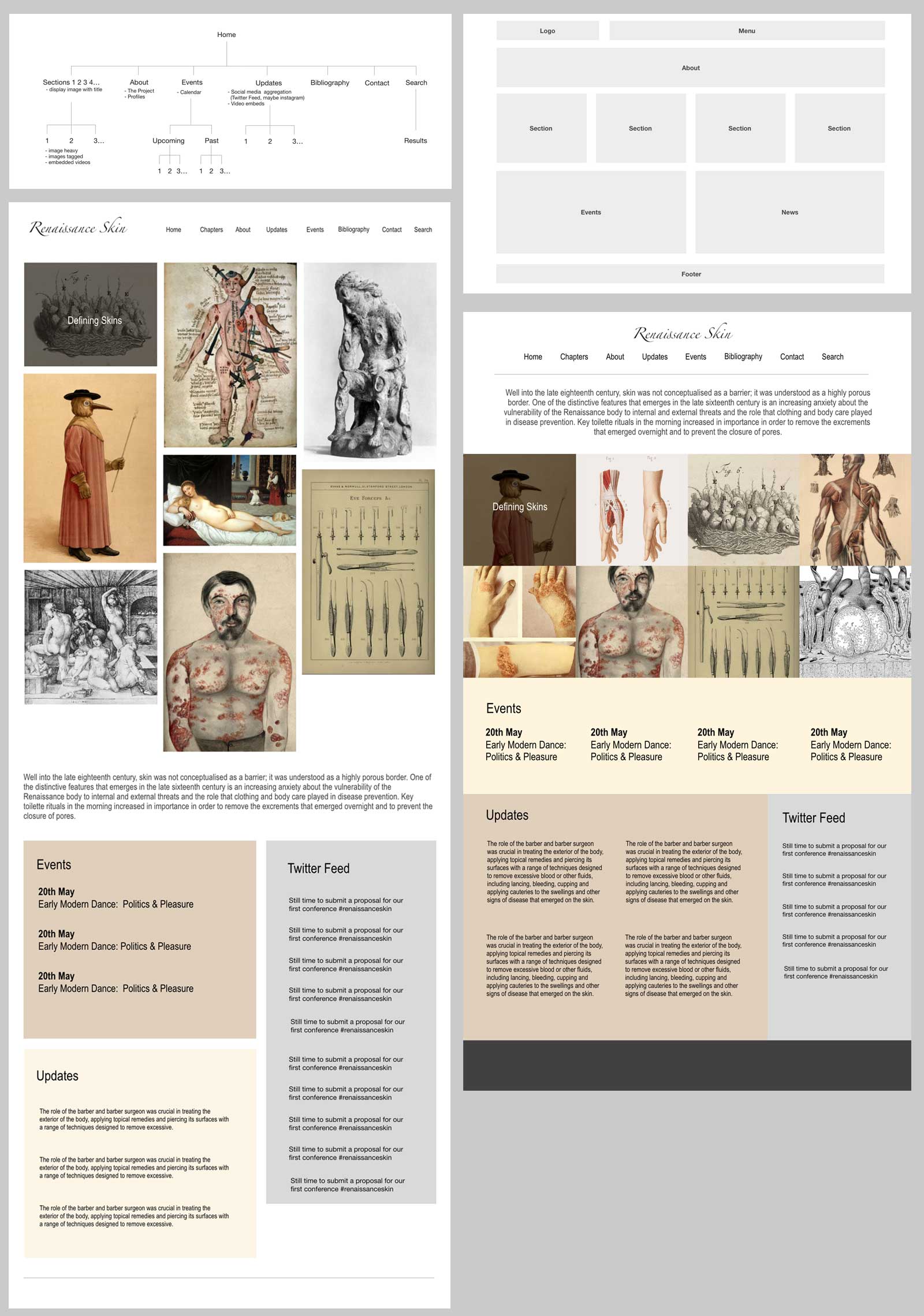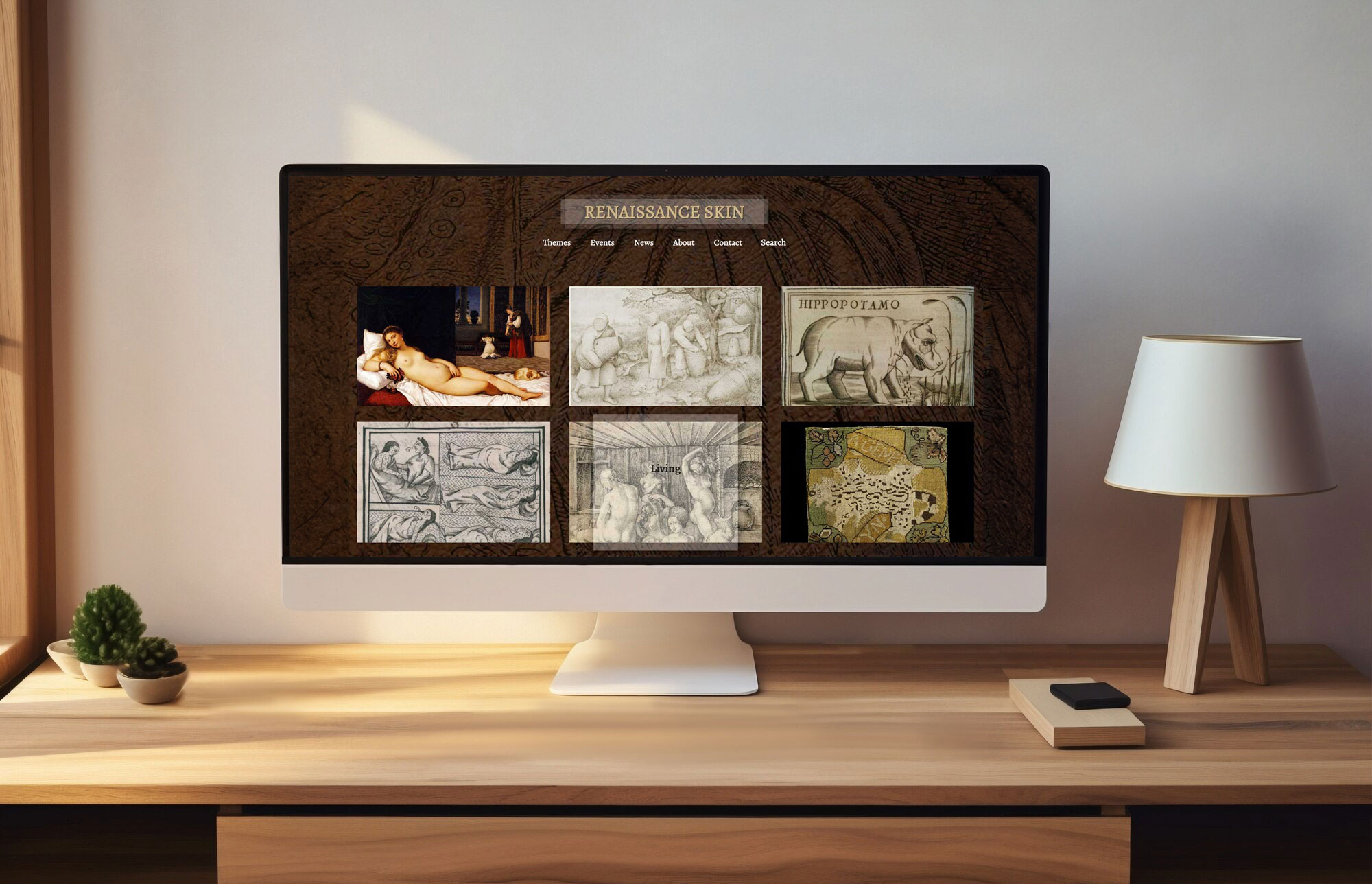Exploring Renaissance Skin
The Renaissance Skin project, funded by a Wellcome Trust Senior Investigator Award and based at King’s College London, is a 5-year research endeavor led by Professor Evelyn Welch. The project aims to delve into the diverse ways in which skin, both animal and human, was conceptualized and utilized in Europe between 1450 and 1700, a period marked by significant global contacts, scientific advancements, and societal changes.
Collaboration and Conceptualization
As the designer at King's Digital Lab, I collaborated closely with a developer, analyst, and project partners to bring the Renaissance Skin project to life. With a focus on visual aesthetics, the partners emphasized the importance of creating a visually engaging and immersive website experience. Leveraging the project's theme of skin, I conceptualized a design strategy that incorporated textures and layers to evoke the tactile sensation of skin.
Visual Concept
Drawing inspiration from historical illustrations and imagery, I utilized an old illustration of a rhinoceros as the background of the site, enhancing its texture and depth. This choice not only aligned with the project's thematic focus but also served to create visual interest and intrigue. Additionally, I incorporated light transparent layers throughout the site to further evoke the sensation of skin, ensuring consistency with the project's overarching theme.

Interactive Framework and User Experience
Translating the design concepts into a functional prototype, I focused on creating a responsive framework that would adapt seamlessly to various devices and screen sizes. Working closely with a developer, I iteratively refined the design on the staging server, ensuring that the final website would deliver an optimal user experience across different platforms.
Navigating Themes and Updates
The website features distinct sections for exploring research themes and project updates. The Themes section serves as a portal into the project's findings, categorized under thematic headings such as 'Defining', 'Breaking', 'Living', ‘Consuming’, ‘Protecting’, and ‘Misbehaving’. Users can explore thumbnail images of curated sources and access larger versions for detailed examination. The Updates section provides informal reports on research visits, seminars, and workshops, fostering engagement and conversation around the project's ongoing activities.
A Dynamic Resource for Exploration
In summary, the Renaissance Skin website serves as a dynamic resource for exploring the multifaceted aspects of skin in the Renaissance period. Through collaborative efforts and innovative design approaches, the project has created an immersive and informative platform that invites users to delve into the rich historical context of skin-related concepts and practices. As the project continues to evolve, the website will remain a valuable hub for researchers, students, and enthusiasts alike to engage with the fascinating intersection of science, culture, and history.

